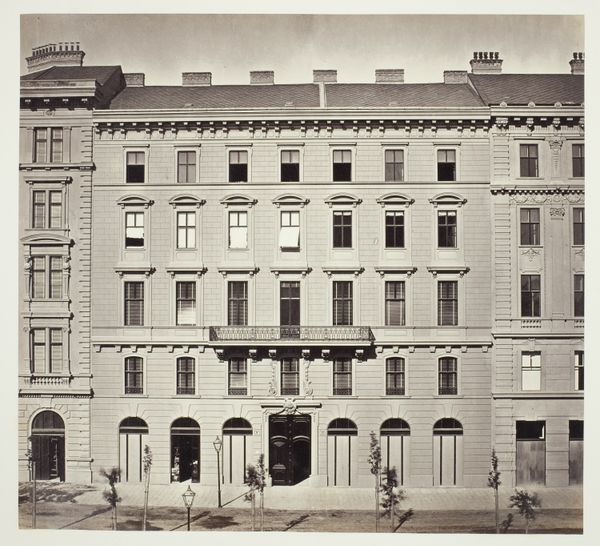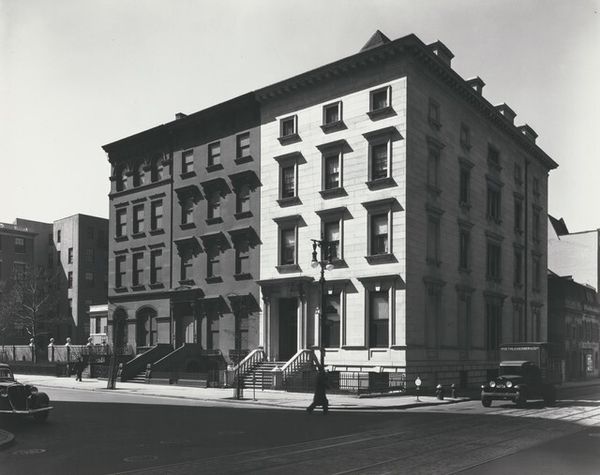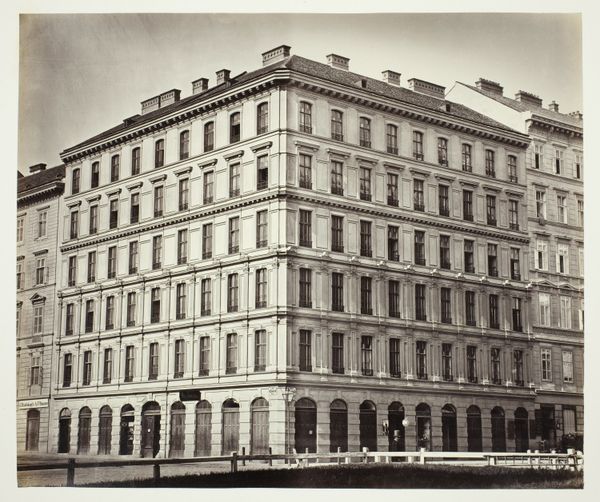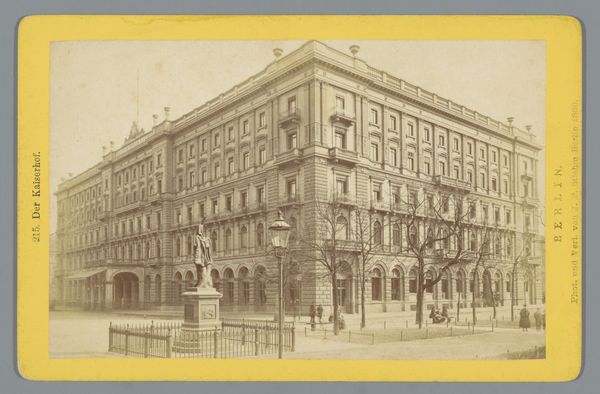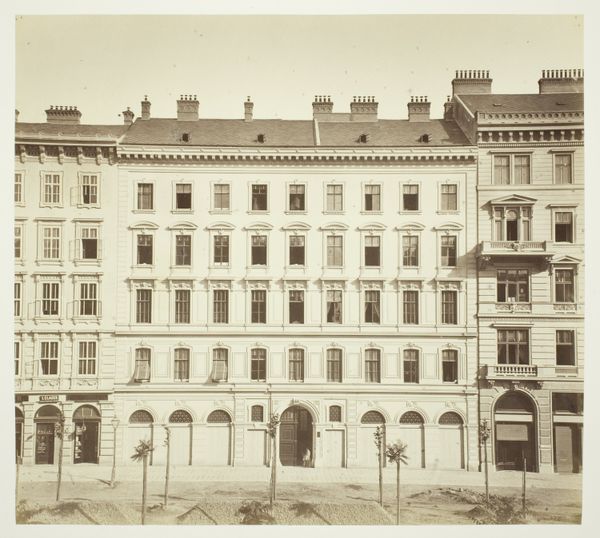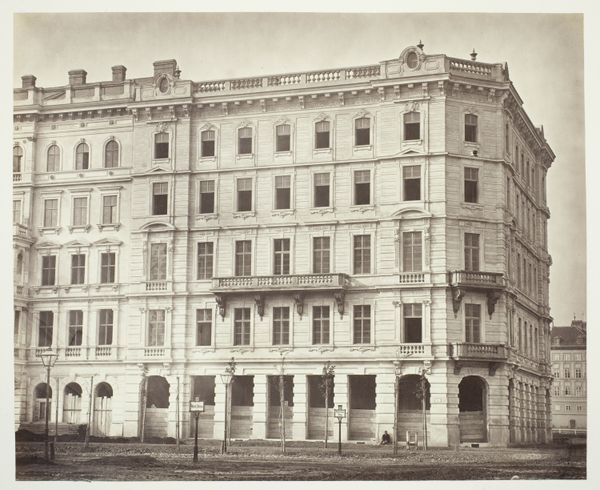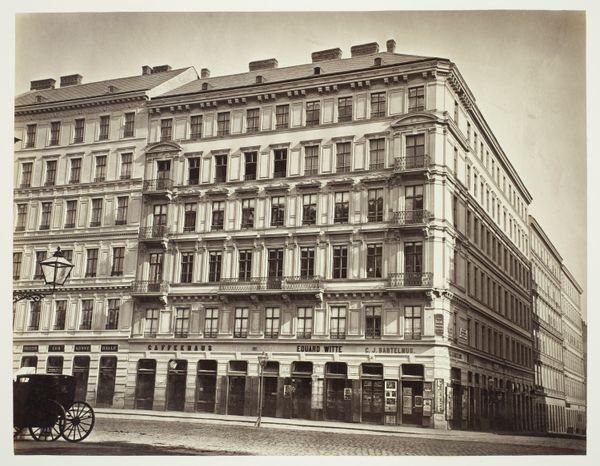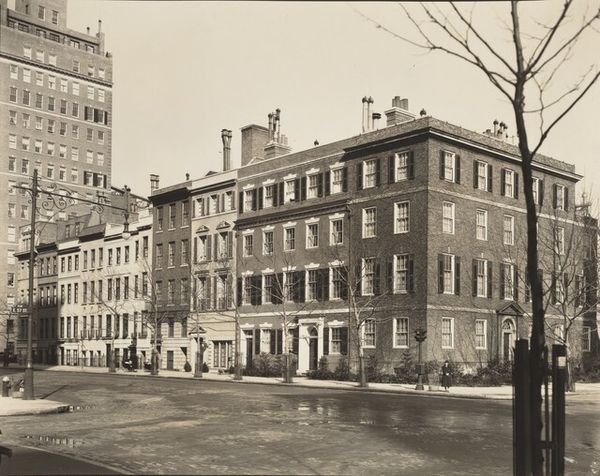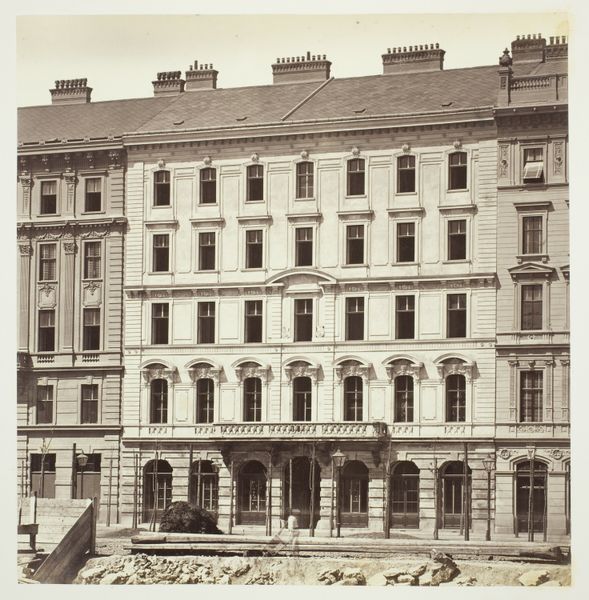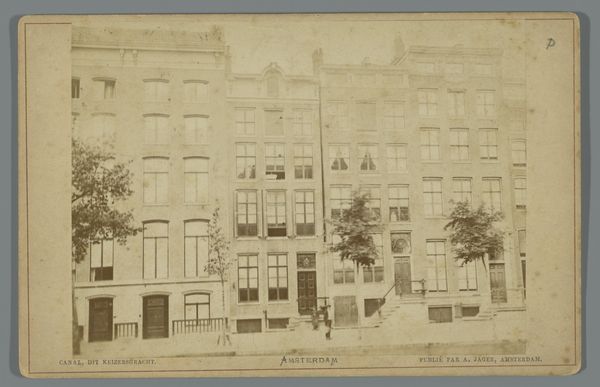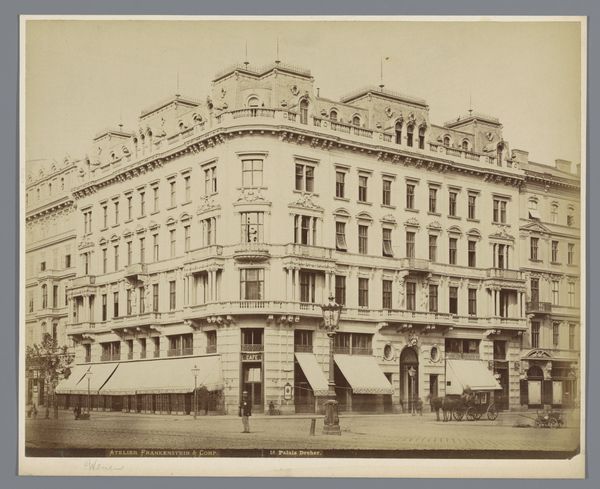
Franz-Josef-Quai No. 13, Zinshaus des Herrn Grafen Anton von Pergen c. 1860s
0:00
0:00
silver, print, daguerreotype, photography, architecture
#
16_19th-century
#
silver
# print
#
daguerreotype
#
photography
#
historical photography
#
monochrome photography
#
cityscape
#
architecture
#
monochrome
Dimensions: 26.2 × 33.5 cm (image/paper); 42.7 × 61.2 cm (album page)
Copyright: Public Domain
Curator: This evocative photograph is titled "Franz-Josef-Quai No. 13, Zinshaus des Herrn Grafen Anton von Pergen." It's an anonymous daguerreotype, most likely taken in the 1860s, and depicts a building on the Franz-Josef-Quai in Vienna. Editor: It's strikingly… austere. The rigid geometry of the building, all those regimented windows. And the limited tonal range contributes to this overall feeling of restraint, almost oppressiveness. Curator: I see the formality, but there’s a certain elegance as well. The repetition of windows creates a sense of order, mirroring the values of the Austro-Hungarian Empire. And the very act of photographing architecture demonstrates a belief in its enduring importance as a cultural symbol. It embodies Vienna's status, then and now. Editor: Hmm. I suppose the horizontal division into distinct layers offers some relief from pure repetition. The awnings create strong horizontal bands that interrupt the vertical thrust. Plus the signage provides some semiotic anchor points to a world outside architectural formalism. Curator: The signs give it life. “Cafe Seifert,” “Schol & Bachrach” - it’s not just about architectural forms. These clues give a narrative, indicating thriving businesses within those stone walls. They reflect social class and daily routines. I sense a tension between permanence, represented by the building, and the transient nature of commerce and street life. Editor: Yes, and the slightly soft focus—likely an artifact of early photographic technology— ironically lends a certain dreamlike quality to this otherwise stark scene. A hint of atmospheric haze softens the sharp angles of the building. Curator: That haziness does invite you to imagine all those lives playing out behind the windows. People with their own unique narratives who were somehow linked to this physical place. That photograph becomes a cultural artifact preserving not just an image of Vienna, but also an image of time itself. Editor: Agreed. Looking at it closely, beyond the initial impression of severity, there’s a lot to see here regarding structure, light, and that captivatingly antiquated style. Curator: A small portal opens to another era. A very potent reminder of how symbols carry complex social, economic, and political memories.
Comments
No comments
Be the first to comment and join the conversation on the ultimate creative platform.

